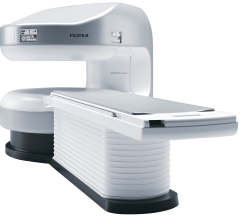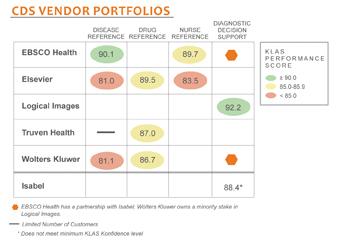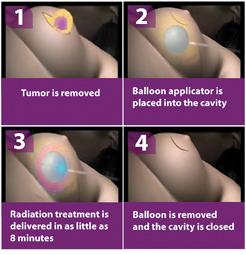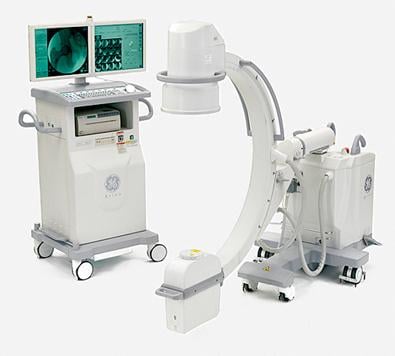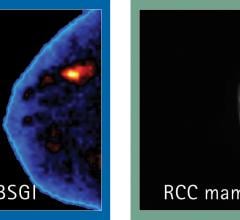April 11, 2014 — Medtronic announced CE mark and European launch of the Evera MRI SureScan implantable cardioverter-defibrillator (ICD) system, the first and only ICD system approved for magnetic resonance imaging (MRI) scans positioned on any region of the body. The Medtronic Evera MRI ICD is not approved in the United States.
Elekta, Royal Philips and University Medical Center (UMC) Utrecht (the Netherlands) announced that the initial components of the world's first high-field magnetic resonance imaging (MRI) guided radiation therapy system are being installed at UMC Utrecht.
The Ontario Association of Radiologists (OAR) strongly supports the Choosing Wisely Canada (CWC) campaign, launched by the Canadian Medical Assn.
Fujifilm’s APERTO Lucent is a 0.4T mid-field, open MRI system addressing today’s capability and image quality needs ...
April 10, 2014 — In a presentation exploring the promise of magnetic nanoparticle (mNP) hyperthermia in breast cancer treatment, Dartmouth researcher P. Jack Hoopes, DMV, Ph.D., co-director of Norris Cotton Cancer Center's Nanotechnology Working Group, reviewed preclinical studies conducted at Norris Cotton Cancer Center and discussed plans for early-phase clinical studies in humans at the annual meeting of the American Association for Cancer Research (AACR).
April 10, 2014 — Stephen Wiley of Terrell, Texas, is the first known patient to be treated for vocal cord cancer with the CyberKnife robotic radiosurgery system from Accuray, announced officials from the University of Texas Southwestern Medical Center.

SPONSORED CONTENT — Fujifilm’s latest CT technology brings exceptional image quality to a compact and user- and patient ...
April 10, 2014 — Fuel 3D Technologies Ltd. announced it has secured a £685,831 ($1.1 million) SBRI Healthcare development contract for the development of a 3-D medical imaging system.
SPONSORED CONTENT — Fujifilm’s latest CT technology brings exceptional image quality to a compact and user- and patient ...
April 10, 2014 — Dose-escalated intensity-modulated radiation therapy (IMRT) with use of a moderate hypofractionation regimen (72 Gy in 2.4 Gy fractions) can safely treat patients with localized prostate cancer with limited grade 2 or 3 late toxicity, according to a study published in the April 1, 2014, edition of the International Journal of Radiation Oncology ? Biology ? Physics (Red Journal), the official scientific journal of the American Society for Radiation Oncology (ASTRO).
Screening programs sometimes assume an almost mystical sense of destiny, as though the technology is fated for use. A lung cancer screening program in the 1950s through the 1970s was one of them. Chest X-rays and sputum cytology were used in the mistaken belief that they could spot lung cancer at a curable stage.
Provider directories and trust mechanisms for the push and query retrieve models of healthcare information exchange (HIE) are being constructed at a national level. HIEs are piloting exchange, but data flow is limited. No matter what governance and operational characteristics are selected within various regions — either full electronic health record (EHR) or a secure direct messaging system for disaster recovery — the value of HIE to patients, physicians and payers must be quantifiably demonstrated. In other words, HIE will need to develop a business model where sustainability is paramount and moves beyond generating revenue for the vendors who today control the allocation of resources.
SPONSORED CONTENT — EnsightTM 2.0 is the newest version of Enlitic’s data standardization software framework. Ensight is ...
ne of Dynamsoft’s image capture software development kits (SDK) has been used to develop and implement image capture capabilities in Fujifilm Medical Systems’ most recent version of Synapse RIS radiology management software.
According to the World Health Organization, the United States spent 17.9 percent of its total gross domestic product (GDP) on healthcare in 2011.1 This was up from 16.6 percent in 2008, and represented the highest percentage in the world.1,2 Although this increase accounts for the development and execution of many advanced technologies and treatments, health policy makers found the escalation to be unsustainable. The Obama Administration’s Patient Protection and Affordable Care Act (ACA) — frequently referred to as the Affordable Care Act or “Obamacare” — has posed strategies to cut back on healthcare costs, while also providing coverage to uninsured Americans, effective Jan. 1, 2014.
Today’s digital picture archiving and communication systems (PACS) is highlighted with several choice words around the industry: accessible, flexible, Web-based, thin client versus thick client and vendor-neutral. Whatever term is used to describe the PACS of today and the future, one thing is clear: the aim now is to be able to store medical images, sourced from any modality, in a secure location on a network and retrieve them for review from any platform or any device.
Did you know that approximately one-third of all the data in world is created by the healthcare industry and that ...
vRad and AllegiantMD announced a strategic partnership that will enable both parties to offer localized radiology services with a national scale and service.
In December 2012 my wife was diagnosed with Stage 1 breast cancer. As the sting of that reality was setting in, we were presented with multiple options regarding her treatment. Chemotherapy was required, but the number of treatments was up for debate. Three different oncologists within the same healthcare system gave three different recommendations: four, six or eight doses of chemo. Even a family member who is a primary care physician told us they were all good options. We were distraught that such a critical decision was left to our own gut feelings. We felt chemo was the right treatment, but the variation of dose options hampered our confidence in the care.
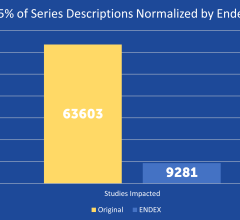
SPONSORED CONTENT — EnsightTM 2.0 is the newest version of Enlitic’s data standardization software framework. Ensight is ...
The current standard of care for treatment of early stage breast cancer is mastectomy or lumpectomy followed by five to seven weeks of daily whole breast radiation therapy (WBRT) treatments. Post-operative accelerated partial breast irradiation (APBI) is slowly replacing whole breast external beam irradiation as an alternative in treatment of early stage lymph node-negative breast cancer. This was originally performed as limited-field breast brachytherapy using multiple interstitial catheters placed post-operatively around the lumpectomy site. Radioactive interstitial wire implants were then placed into the catheters.
As a less expensive, radiation-free form of medical imaging, ultrasound is finding increased utility in many areas of healthcare. The technology’s evolving flexibility and portability make it an attractive option for doctors looking to triage patients in an emergency room, perform rapid cardiology examinations or offer supplemental imaging for women who have already undergone screening mammograms. Its use is rapidly expanding at the point of care in hospitals in more than 20 specialties, according to a December 2013 report in the journal of the World Heart Federation, Global Heart.1
Mobile C-arms have become a popular option in many operating rooms (ORs) across the nation as healthcare organizations look to save space and money. According to Klaus Hörndler, managing director of Ziehm Imaging, “ORs in hospitals are becoming ever smaller, while more devices are being used inside them.” Because mobile C-arms are smaller, lighter and more easily maneuvered than fixed angiography systems, they provided an effective solution. At a fraction of the cost of fixed angiography, these systems are also a good option for budget-conscious facilities that have limited financial resources or are experiencing budget cuts.
With healthcare reform’s focus on information technology (IT) as the primary vehicle for change, there has been an increased interest in this area. Health IT software has taken center stage as healthcare facilities look to implement new Stage 2 Meaningful Use requirements. So, it is no wonder that the Healthcare Information and Management Systems Society (HIMSS) annual meeting, held Feb. 23-27 in Orlando, Fla., drew a record crowd of attendees and exhibitors alike.
A study with a new ultrasonic scanning technique shows that scanning of the carotid arteries can reveal who is at high risk of being hit by a blood clot.
Molecular breast imaging (MBI), also referred to as breast-specific gamma imaging (BSGI), can detect cancer independently of breast tissue density.


 April 11, 2014
April 11, 2014 

